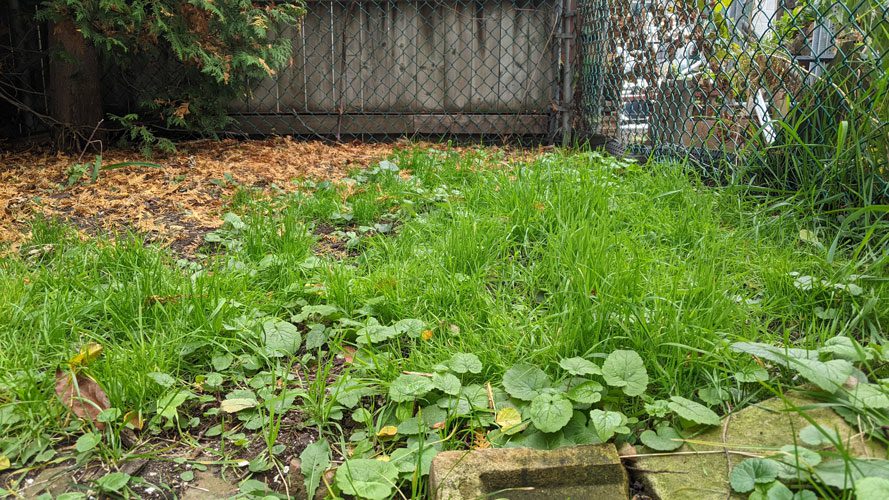Down the Rabbit Hole: The Year of Growing Food for my Bunny
Between BUFCO’s staff gardens, my CSA share from Luminous Ground Farm, my own produce needs are sufficiently met. But this causes two problems (1) my own backyard gets neglected, (2) the cutest member of my family still requires external produce.
As they say, the problem is the solution. Theoretically, if I plant my own bunny food, I get to divest from Big Pet™, sequester carbon in an underutilized space in my yard, reduce transport/packaging required, and save money. Plus, every other blogger who has tried it seems to say it’s easy… I just need to seed it, harvest a couple times, and Bob’s my uncle Stormtrooper’s my bunny. As an added bonus, because my bunny poop is fed to my worms, and my worm poop feeds my garden, there’s something poetic about “closing the loop” by having the garden feed my bunny.
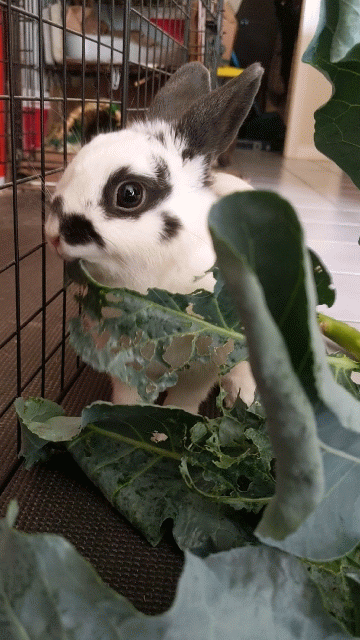
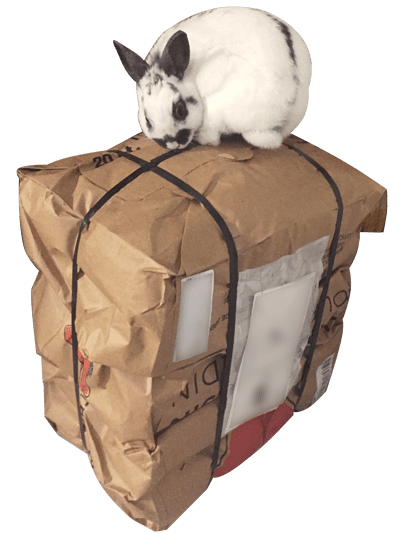
To be clear, as far as pets go, rabbits, as herbivores, have a low environmental impact to begin with (huge caveat: as long as rabbits owners do not abandon their bunnies, which can cause overpopulation and infrastructure damage!! [Example]); in fact–and I’ll cover Stormtrooper’s ears for this next part–there are even calls to normalize eating rabbits as a low impact protein source [Example]. Still, the packing factor of hay and the sheer volume that a single rabbit goes through, makes hay a difficult product to pack and distribute. Thus, plastic packaging and transportation are likely the main environmental externalities that the urban bunny owner should be aware of.
This is by no means expert bunny OR grass advice, but if you can humor me, I will take you (and Stormtrooper) down this proverbial rabbit hole.
The Client
Stormtrooper was rescued during a snowstorm in Christmas Eve 2017, following 3 months of eating grass in my parents’ Richmond Hill backyard. A feisty but loveable diva majoring in electrical reverse-engineering and minoring in interior un-design, much to her parents’ chagrin.
The Veggie List
Timothy grass, Phleum pratense, is essentially a cover crop; not native, but naturalized. They say food is medicine, and I’m convinced this is literal for bunnies. Google anything wrong with your bunny–teeth, nails, eyes, fur, poop–and 80% of the time, the solution is “feed your bunny more timothy hay”.
Timothy is a cold hardy crop, meaning that I have two chances at seeding: between February-May, and again in August-September.
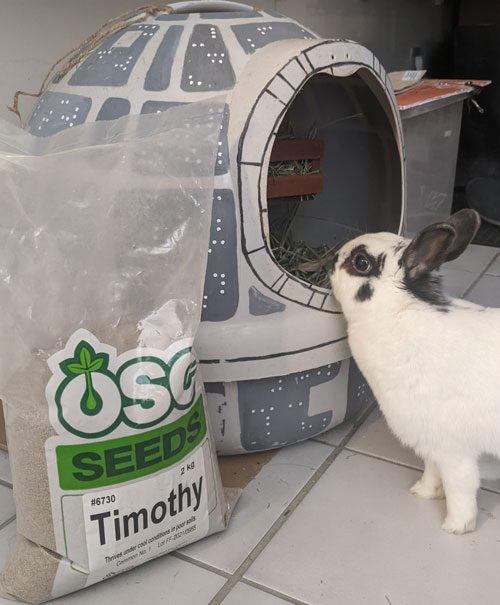
The Garden Plan
A sad spot in the south part of our backyard next to a miscellaneous assortment of cedars, shrubs, ferns, and a tulip here and there. The fence, trees and house (on the east side) block a majority of light, leaving us only with a couple hours of light through the chain link fence on the west.
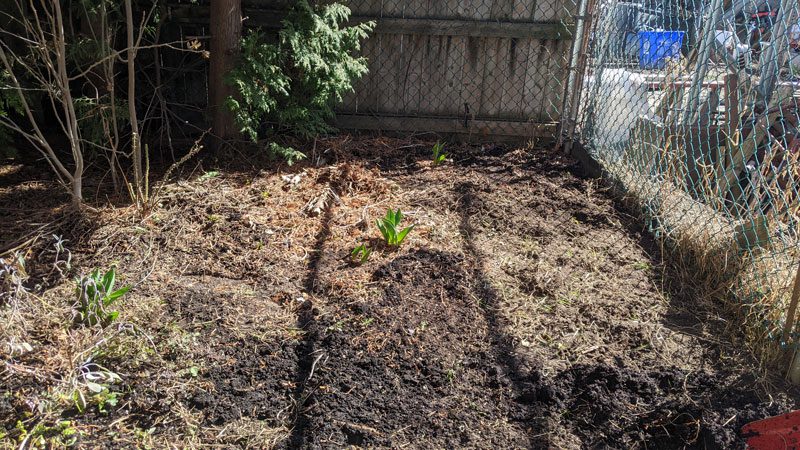
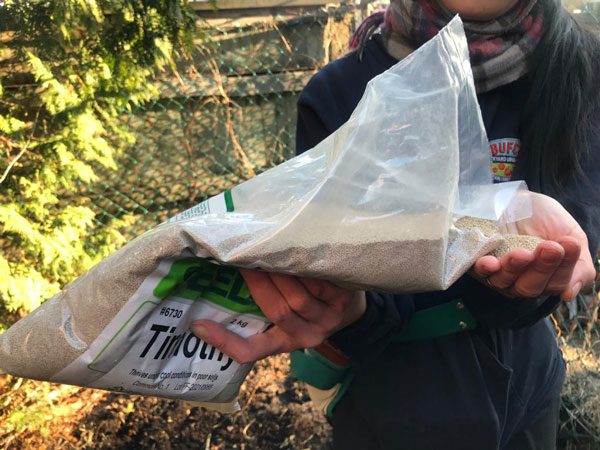
The Results
Round 1
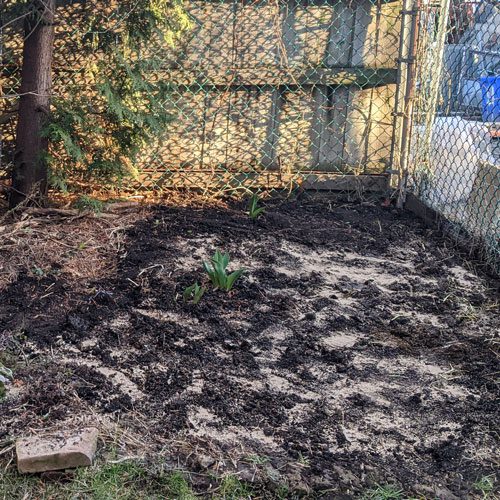
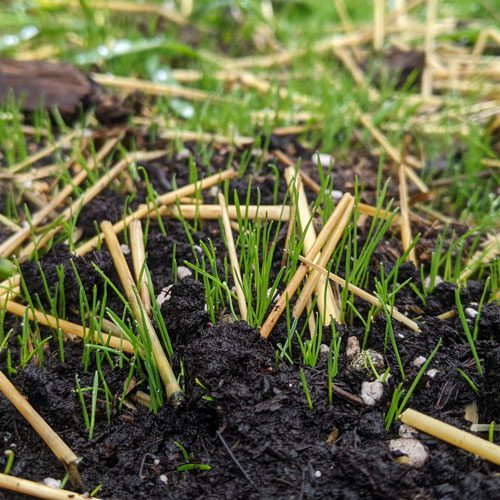
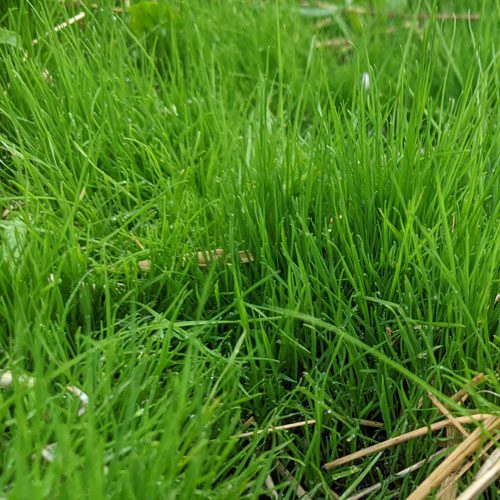
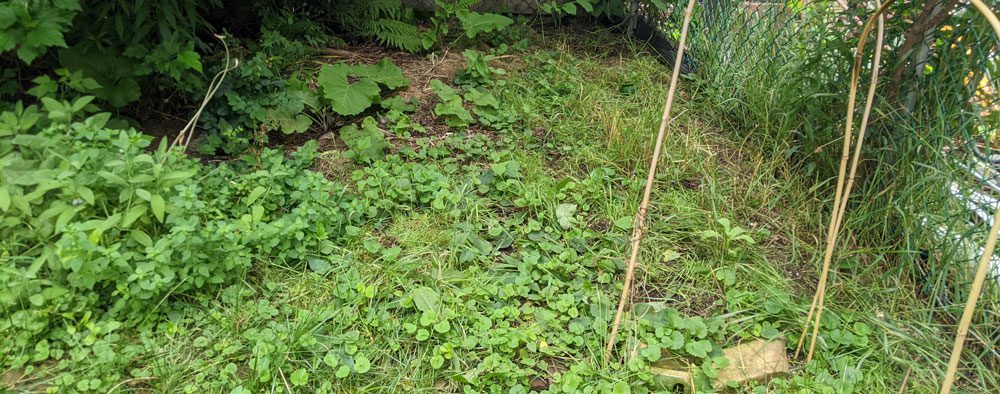
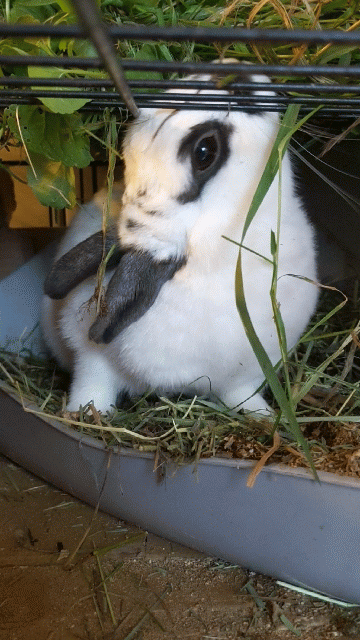
Honestly, things started pretty well, but after that mid-May shot, the weeds really outgrew the timothy grass, and I wasn’t sure how to deal with it without disturbing the grass. I am supposed to be able to harvest 50 days after sowing (May 27), but clearly that grass was no where near the 2-4ft tall I was promised by May 11. I kept waiting for a growth spurt (or even the formation of seed heads), but by July, it was too hot, all the non-timothy plants I weeded came back with a vengeance and outcompeted the grass.
Even if I had any success growing timothy, I had failed to consider the fact that hay needs to be cut and baled in dry weather (not that I grew enough to warrant long term storage anyway), and this summer was anything but. Even my go-to hay alternative to Big Pet™ struggled with this year’s growing conditions:
“2023 has proven to be a very challenging year for us hay producers here in Ontario due to weather issues and after loosing our entire crop of 1st Cut Timothy* hay to rain”
— Hay Country Newsletter
(They’ve since been able to source more hay, in case you’re interested!)
*1st cut timothy refers to the first harvest of timothy grass in the season. Timothy can regrow 1-2 times within in the same season, resulting in 1st cut, 2nd cut and even 3rd cut hay, each with distinct nutritional properties!
Embarrassingly, my crop did not establish nearly well enough to even make the first cut, let alone lose the crop to weather.
DID YOU KNOW: HAY VS STRAW
Hay is a generic term for a variety of different grass crops. It is harvested and bundled green and grown for animal feed.
Straw is wheat that has been harvested for its seed. The empty seed head and remaining stalk is left to dry in the field and is then bundled. This makes it perfect for weed-free mulching your gardens–we sell organic straw bales in our shop!
Round 2
Recall how I said that timothy grass is a cold hardy crop? I tried to redeem myself by reseeding for a late season succession, this time weeding much more vigorously in advance.
It’s doing okay on the weed front, but the growth is super patchy. It’s coming up to November, and whatever managed to establish itself is barely 6 inches tall.
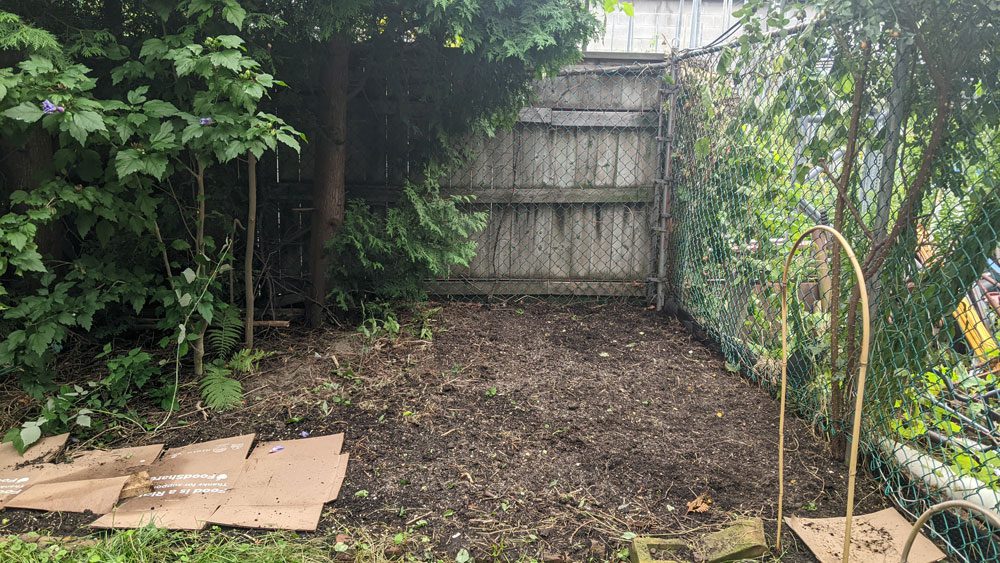
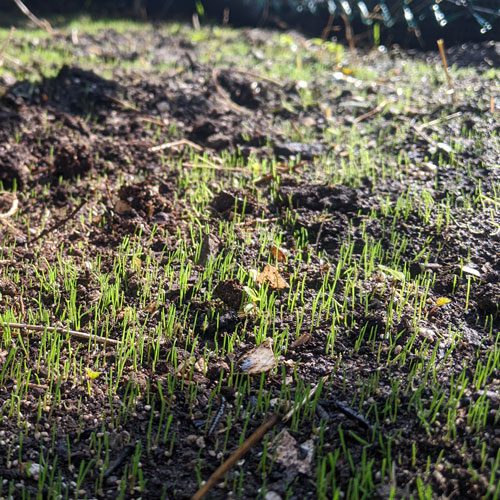
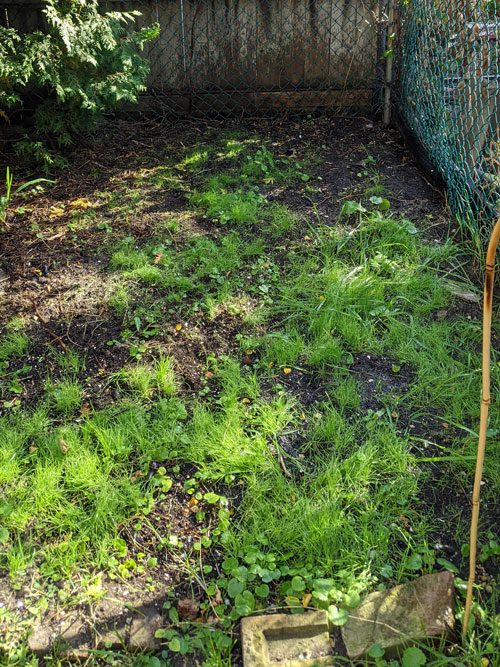
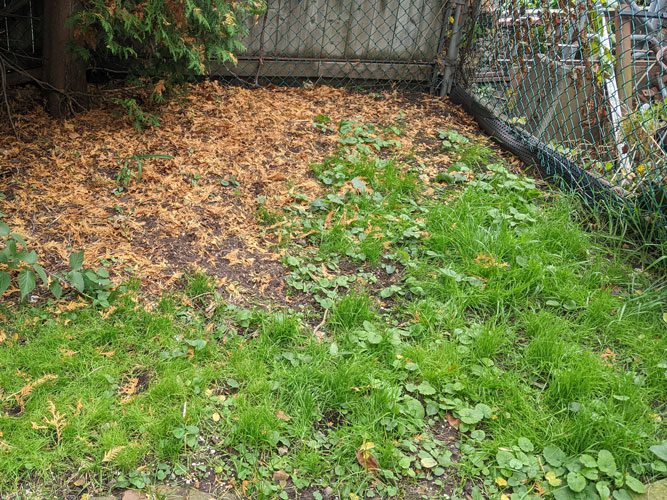
Another thing I failed to consider: I have absolutely none of the proper tools to cut, dry or bale the hay. The upside of being an ineffective grass-grower is that I could get away with harvesting with scissors.
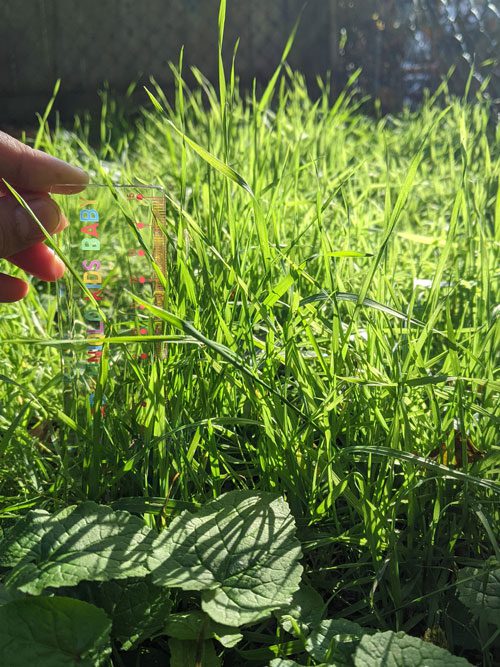
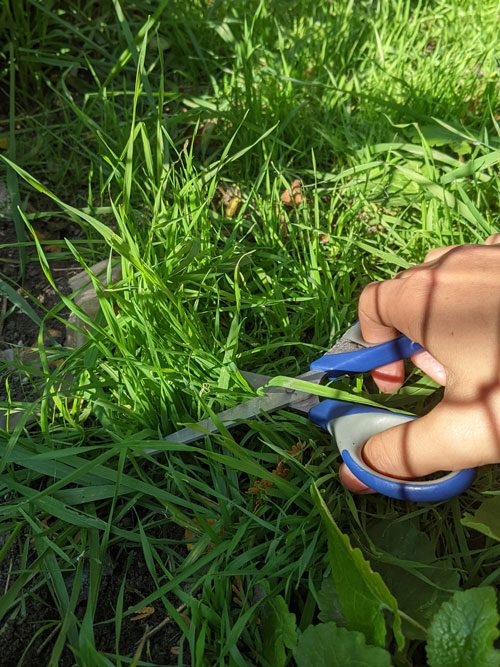
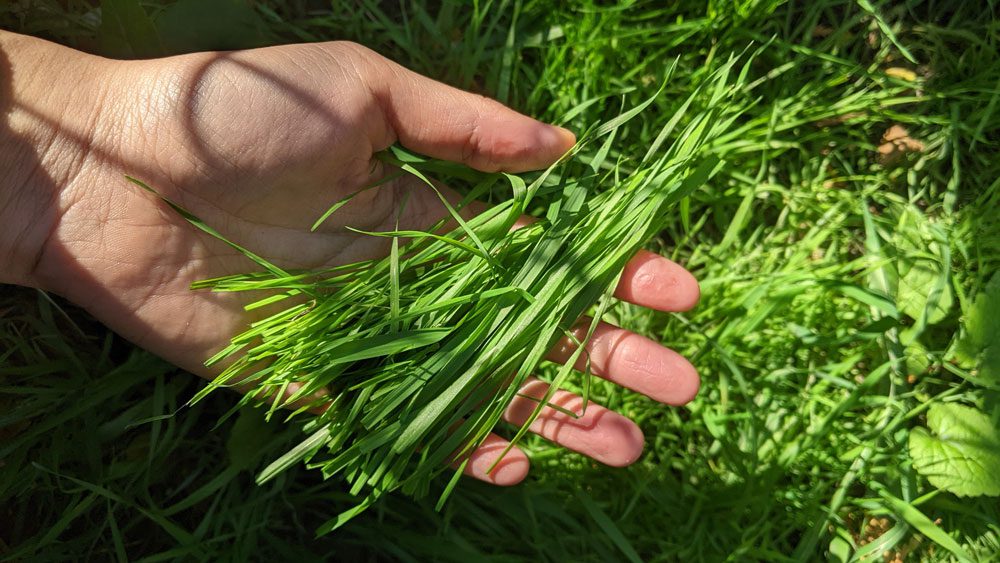
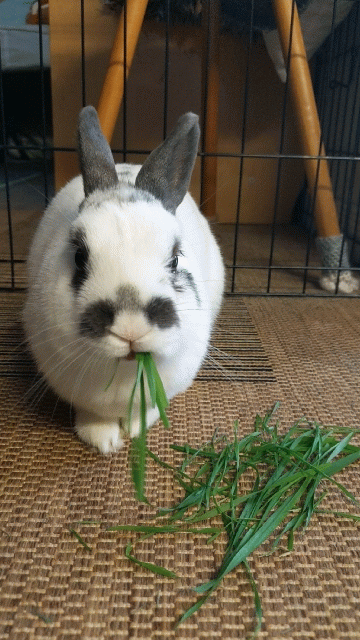
Conclusion
Don’t laugh at me, but recall that the original goal was to: “Divest from Big Pet™, sequester carbon in an underutilized space in my yard, reduce transport/packaging required, and save money”… It’s safe to say that I’ve failed on every single one of these goals.
“Reduce transport/packaging required, and save money” — The seeds themselves are packaged as 2kg bags, costing around $40 each with shipping (did not reduce transport, but much smaller volume than hay), and I bought two of such bags (2 plastic bags) for the my two successions ($80 total). I barely got one meal out of it for my bunny, nor was I able to re-harvest from the same plants multiple times. Meanwhile, a bag of conventional organic timothy hay is $30, and lasts us about 1.5 months.
“Sequester carbon in an underutilized space in my yard” — I doubt much carbon was sequestered, given that the grass barely grew to its mature size and therefore didn’t convert as much atmospheric carbon into plant material as the existing weeds would have had I left it fallow.
“Divest from Big Pet™” — Far be it from me to claim, or even desire, self sufficiency in any aspect of my life, but boy-oh-boy do I know now how inadequately self sufficient I am. Having spent some 80% of our collective working hours on agriculture pre-industrialization to well less than 10% post-industrialization [Our World in Data], I thought perhaps being willing to spend even 2% of my summer to make my household more self sufficient for even one week could be a cool conversation piece on my “modernity CV”. Yet here I am, still buying rabbit food from Big Pet™ (especially given the many weather and quality issues around local producers this year).
I know purity, dogmatism, and romantic notions of the “good ‘ol days” are not the way to a more sustainable food system, but the act of growing what little I can of my own (pet) food is still an intervention in the presently unquestionably unsustainable food system. Attempting to do so gave me a glimpse into what it actually takes to reclaim power (and why we often opt not to!). It forced me to reckon with the web of dependencies that my quality of life relies on and my ultimate complicity in injustice towards many for the love of few (or one particular bunny, in this case). As usual, there are no morally justifiable answers, just deep discomfort, and the possibility of generative dialogue.
Would I do this again next year?
If I still have a reason to grow timothy–that is, if Stormtrooper is still alive–there is still lots for me to experiment with: timing of seeding/harvesting, irrigation, fertilizing vs. not fertilizing, foraging mixes (think companion plants for cover crops!). Perhaps, as Arlene suggests, I may need to try a part of the yard that gets more sun. I feel like I’ve learned too much from my failures this year to stop trying.
If I don’t have a reason to grow timothy, I think I’m better off making meadows, not lawns!
